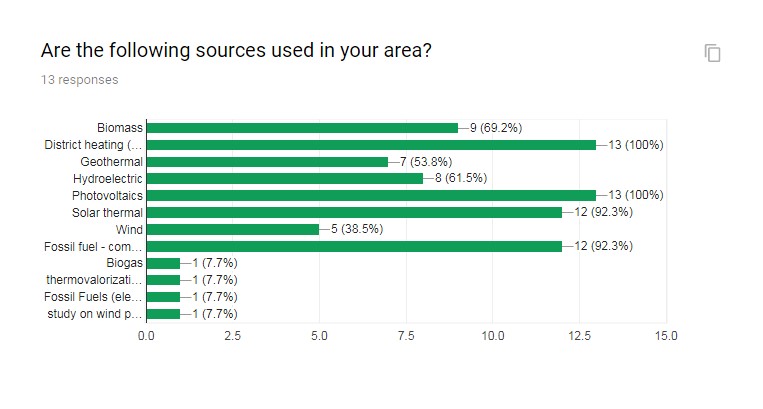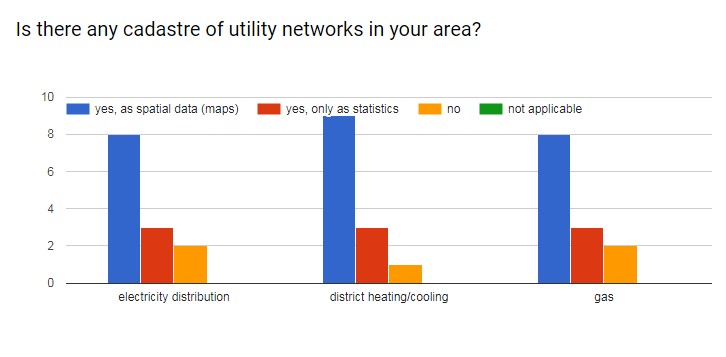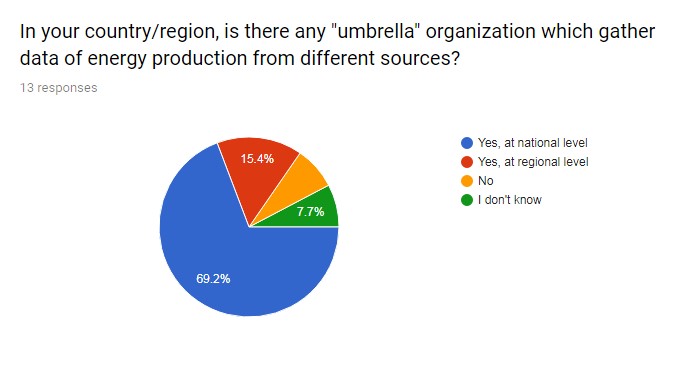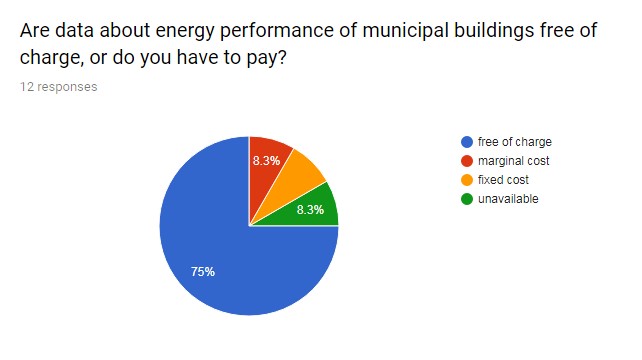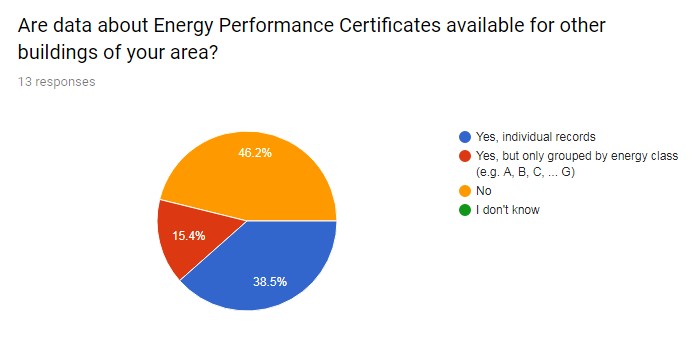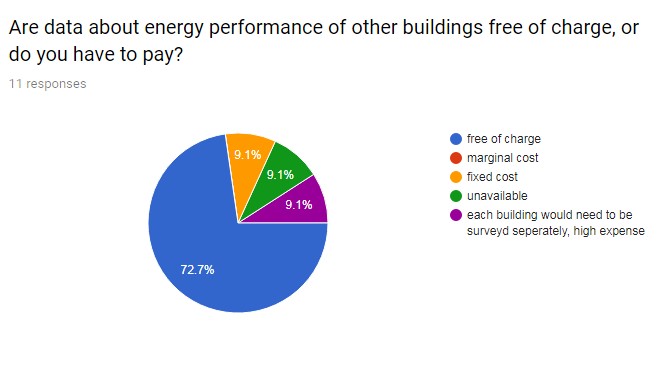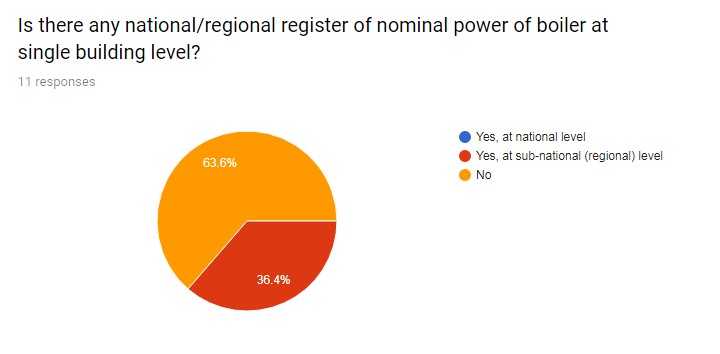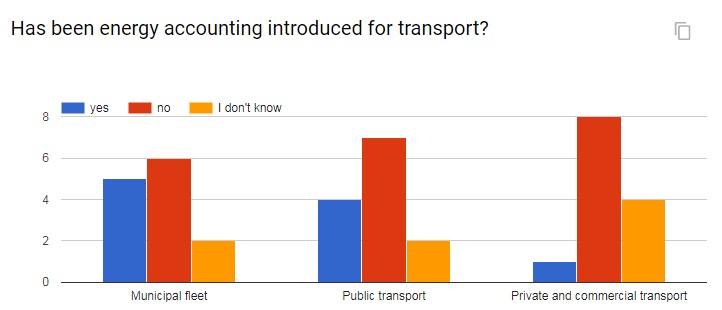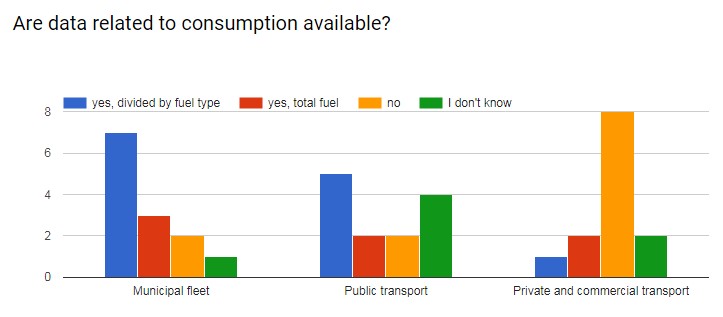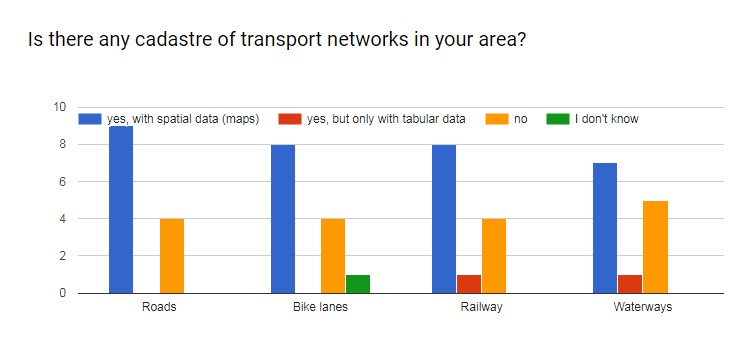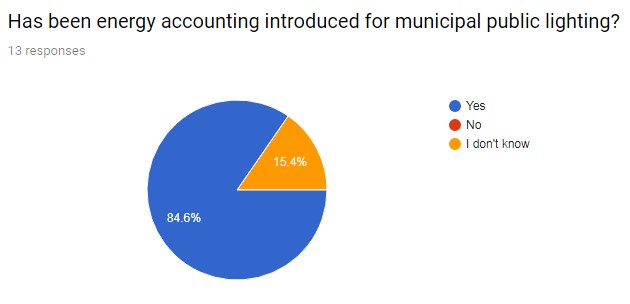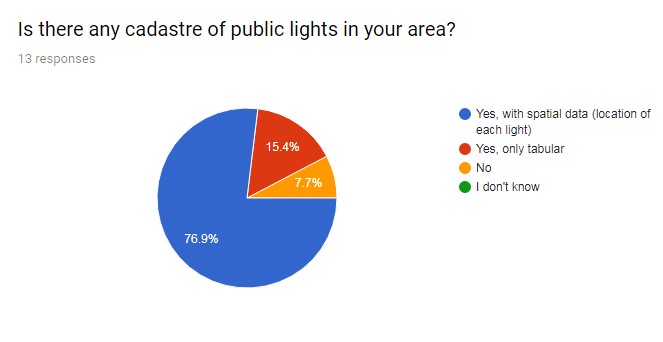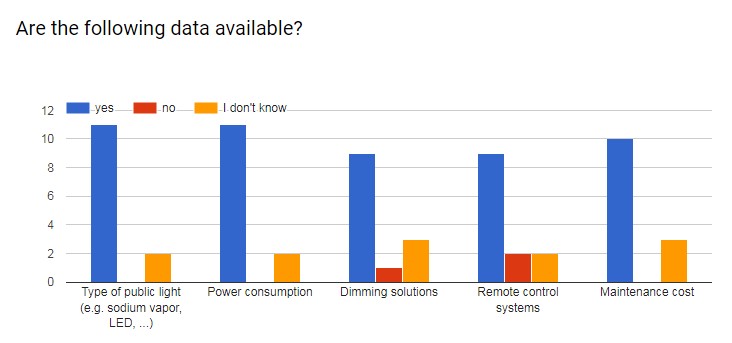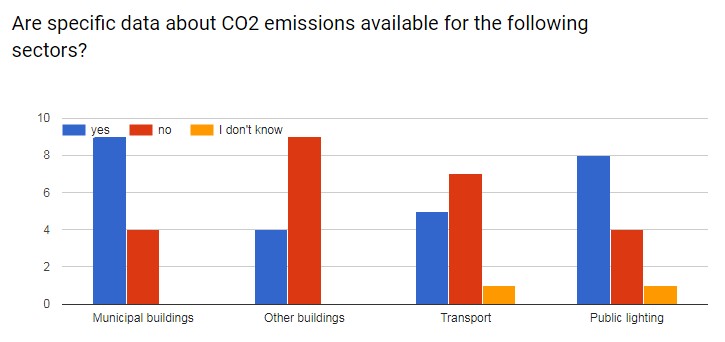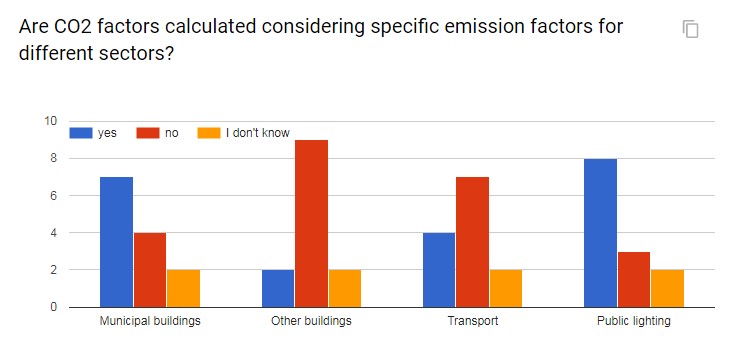Regional reports on energy data management
Contents
Introduction
In this page results are presented from questionnaire collected about Energy data available in the regions of CitiEnGov partners.
The questionnaire was addressed (but not limited) to CitiEnGov partners and other local stakeholders (e.g. public authorities, business support organisations, consultants, advisors, researchers...), in order to have a more comprehensive and balanced overview, independent from personal opinions or knowledge.
The concept of "Energy data" include data about:
- energy production and distribution
- energy real consumption
- energy estimated needs and performances
In CitiEnGov context, energy data are data (raw/detailed or statistics/aggregated) being to be used for defining energy plans (e.g. SEAP/SECAP) or to monitor them. Energy data refer to buildings, transport and public lighting.
Questions have been organized in the following sections:
- general section (questions about the respondent)
- energy sources, production and distribution
- energy consumption and energy performance for municipal buildings
- energy consumption and energy performance for other buildings
- energy consumption for transport
- energy consumption for public lighting
- CO2 emission factors
The following sub-sections provide results and diagrams from the survey.
Energy sources, production and distribution
As we can see from the following diagram biomass, district heating, photovoltaics, solar thermal and fossil fuels are well represented in all countries and districts that were analysed. But one should be careful with this data because it does not show us quantitative values eg. solar thermal is used in almost all areas but is just a fraction of total energy used from fossil fuels.
Cadastre of utility networks are mostly presented as spatial data. In some cases, there is only statistics. In most areas these applications are hard to master and are quite complicated. For example, in SLO we have two systems that are not connected and that doesn’t allow user to download data for more than one unit at the time.
In most countries there are organizations responsible for gathering data for energy consumption at national level but only ¼ of respondents have an organization that gathered data at regional level. This is quite a big problem because mostly we have some documents that are evaluated on national or local level and for example in SLO there are a lot of small municipalities where is very hard to plan energy projects (because of their small size).
Energy consumption and energy performance for municipal buildings
In most countries the data about energy performance is free of charge but is in most cases not publicly available. In the case of LEAG (that gathers data for 11 municipalities) data is free of charge but only if municipality that is the owner of the data allows it.
In appx. half countries the data about energy performance certificates are not available. In SLO energy performance certificates are public documents and are also publicly available (downloadable from the web page in pdf form), but the system is designed in a way that users cannot get the data of the district in tabular format. In some reigns that is a possibility and is also very useful for evaluating energy related documents (eg. LEC, SEAP).
Energy consumption and energy performance for other buildings
Data about energy consumption and energy performance of private buildings is quite a big problem because there are always issues about privacy, accuracy and what kind of data to collect. Data is across EU mostly free of charge but the question is what data.
Are this calculated or real energy consumption? The reader should take it into account that if we are talking about calculated energy consumption of the building (that can be summarized from energy performance certificates) or real energy consumption of the building, that there could be big a difference. This is especially true for buildings that consume under 60 kWh/m2 of heat per year.
Boilers are devices that produce heat for heating or preparation of hot water. In most EU countries the boilers are examined once a year by a chimney companies. Electric boilers are devices for heating hot water using only electricity. Other boilers use gas to heat the water, whilst an electric boiler can be used in off-grid areas, or where the gas supply is either not wanted or not possible.
Whenever we convert electricity directly to heat the sustainability of conversion is questionable. According to European Environment Agency appx. ¾ of all produced electricity in EU comes from power plants that use nuclear or fossil fuels. So, with electric boilers we use appx. 3 kWh of fossil fuels to produce 1 kWh of electricity. Using a heat pump instead helps to lower the consumption of primary energy and also the need power. Despite these findings there is no national or regional register of nominal power of boilers at single building level.
Energy consumption for transport
Final energy consumption for transport accounts for appx. 33% in EU according to European environment Agency.
The annual energy consumption of transport in the EEA-33 grew by 38 % between 1990 and 2007. Road transport accounts for the largest share of energy consumption, with 74 % of the total EEA-33 demand in 2015. Despite a decrease in energy consumption since the recession, road transport energy consumption in 2015 was still 28 % higher than in 1990. Despite these numbers Energy accounting for transport for municipal fleet was introduced for appx. only half of all respondents.
The number lowers for public transport and especially for private and commercial transport.
The data about fuel consumption are mostly available for municipal fleet and public transport. For private and commercial transport, the data is mostly not available. The problem is that according to European environment Agency the share of energy usage for cars is appx 50 % of all energy used for transport compared to buses and trains that uses less than 10 % all energy used for transport.
So, in order to address the challenges of transport private and commercial transport should be taken into account.
Cadastre of transport is available in most areas but there is a lack of tabular data. For this reason, it is very hard to get appropriate qualitative data for elaboration of LECs and SEAPs.
Energy consumption for public lighting
According to Prelovsek [3] public lighting represents a relatively small proportion of the overall energy consumption in the country as it amounts to around 0.7 %.
The effort in reducing it, however, offers significant impact especially as public lighting is often the biggest public energy consumer in a municipality. Furthermore, investment in public lighting tends to have a quick payback time especially when the lighting equipment is rather obsolete.
As we can se from the diagram below the energy accounting for public lightning was introduced in most municipalities. The reason for that is also simpler data capture compared to transport.
As we can see from diagram below cadastre for public lightning is implemented in appx ¾ regions. Problem that arises in some countries is the same as with all cadastres.
Cadastres mostly contain all the important data about the lightning. Sometimes the data is out of date, because some retrofits are made at the level of single lamp. There is also a problem regarding traceability of changes that were made in the past. In some municipalities the retrofit of public lightning was successful but the area where the public lightning is implemented also grow. This should also be taken into account.
CO2 emission factors
CO2 emission factors are mostly available where there is data about type and quantity of energy used is available. For this reason, most of the data is available for municipal buildings and public lighting.
CO2 emission factors are mostly calculated from conversion factors that are defined at the country level. The factors depend on the share of the final energy usage for electricity production. Thus, more electricity is produced from renewable energy resources lower are the factors.
